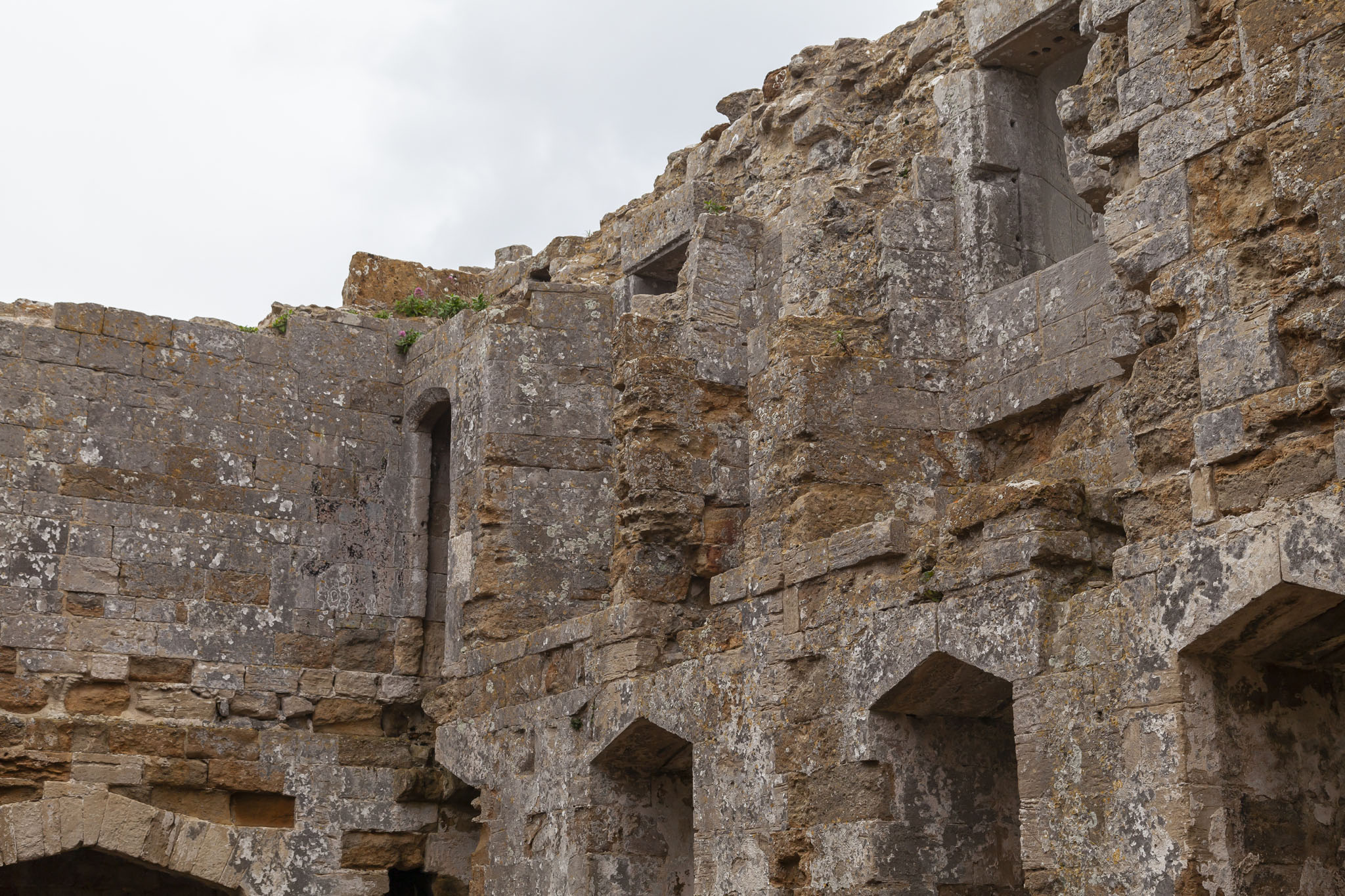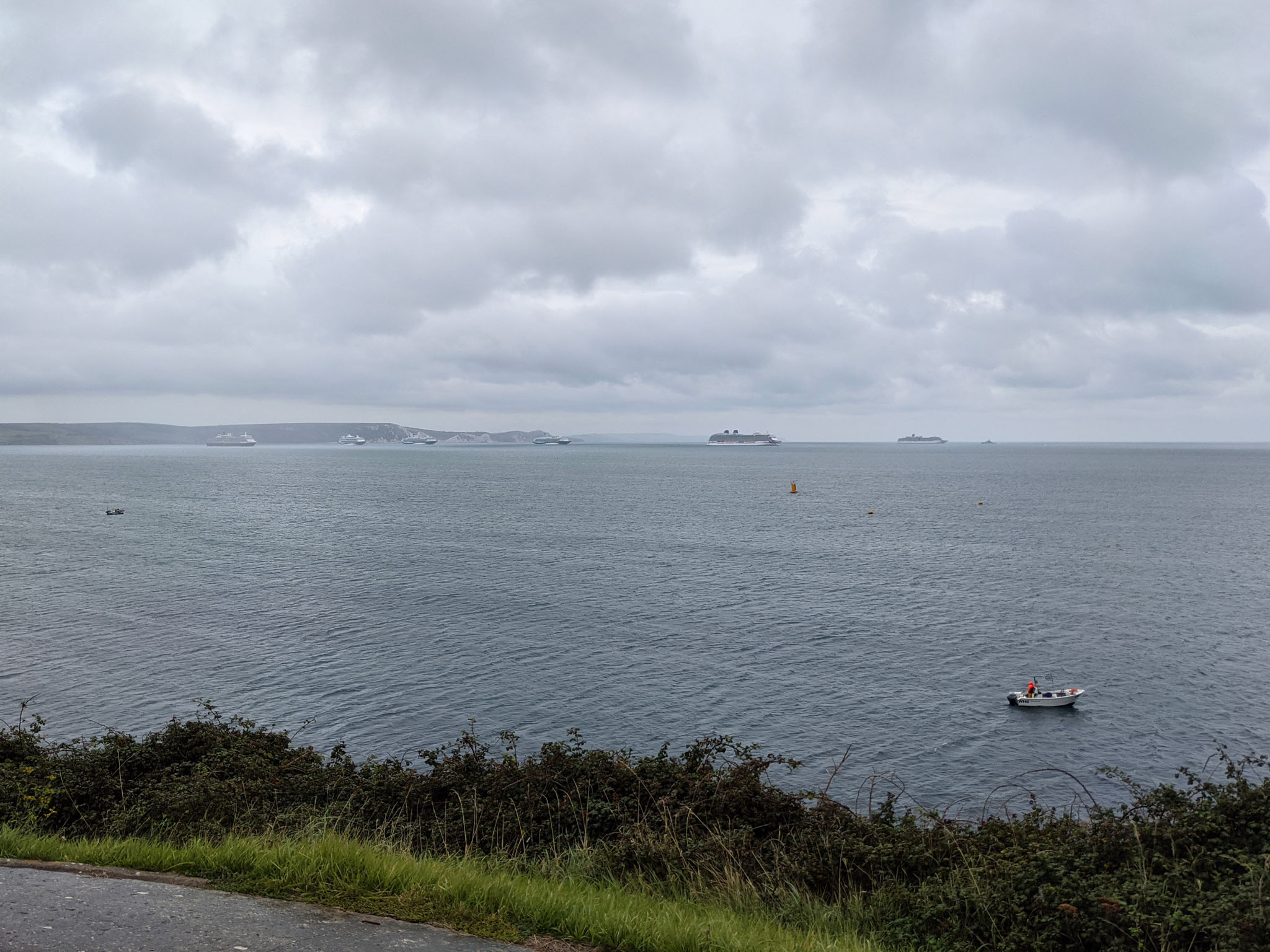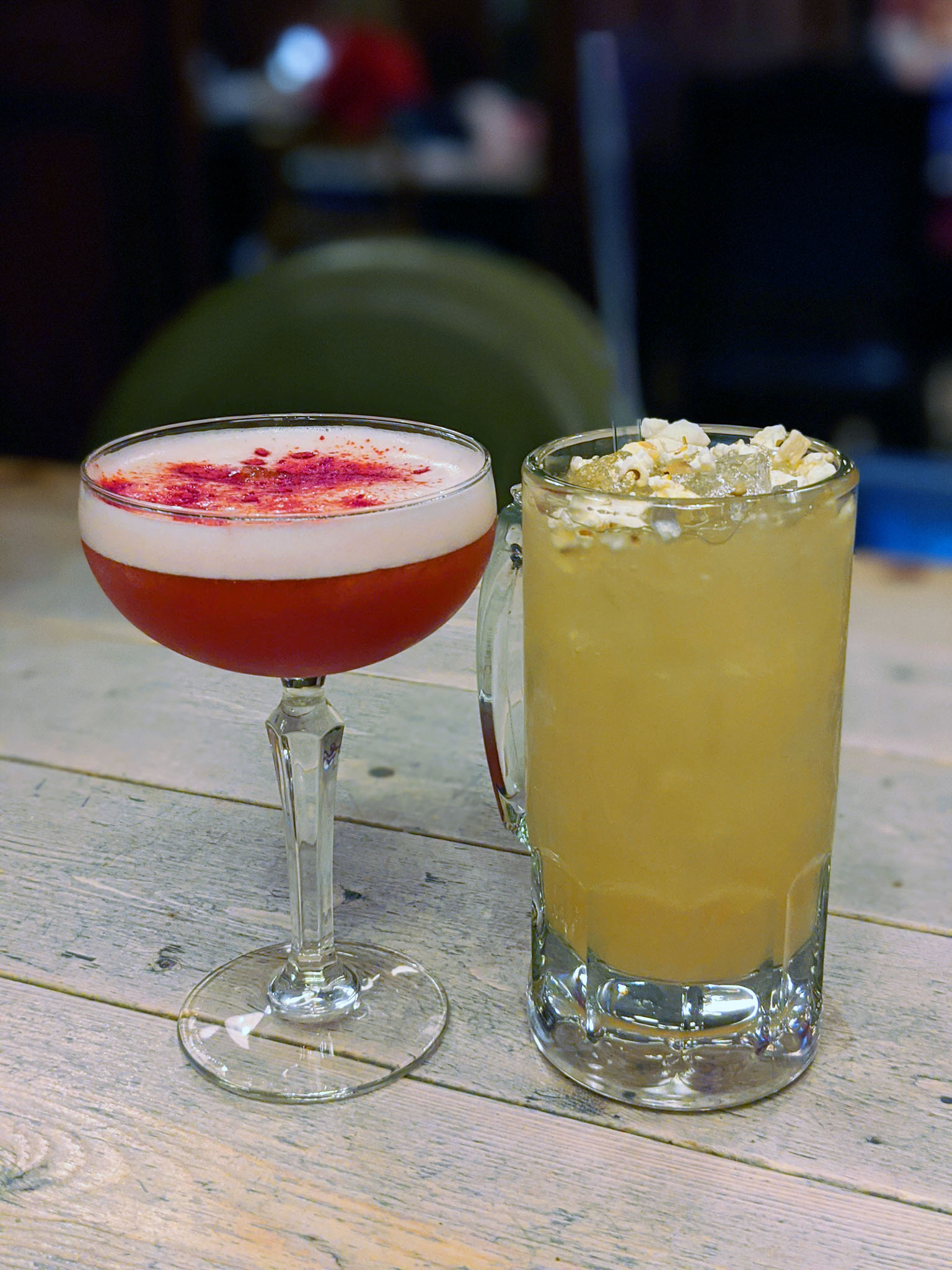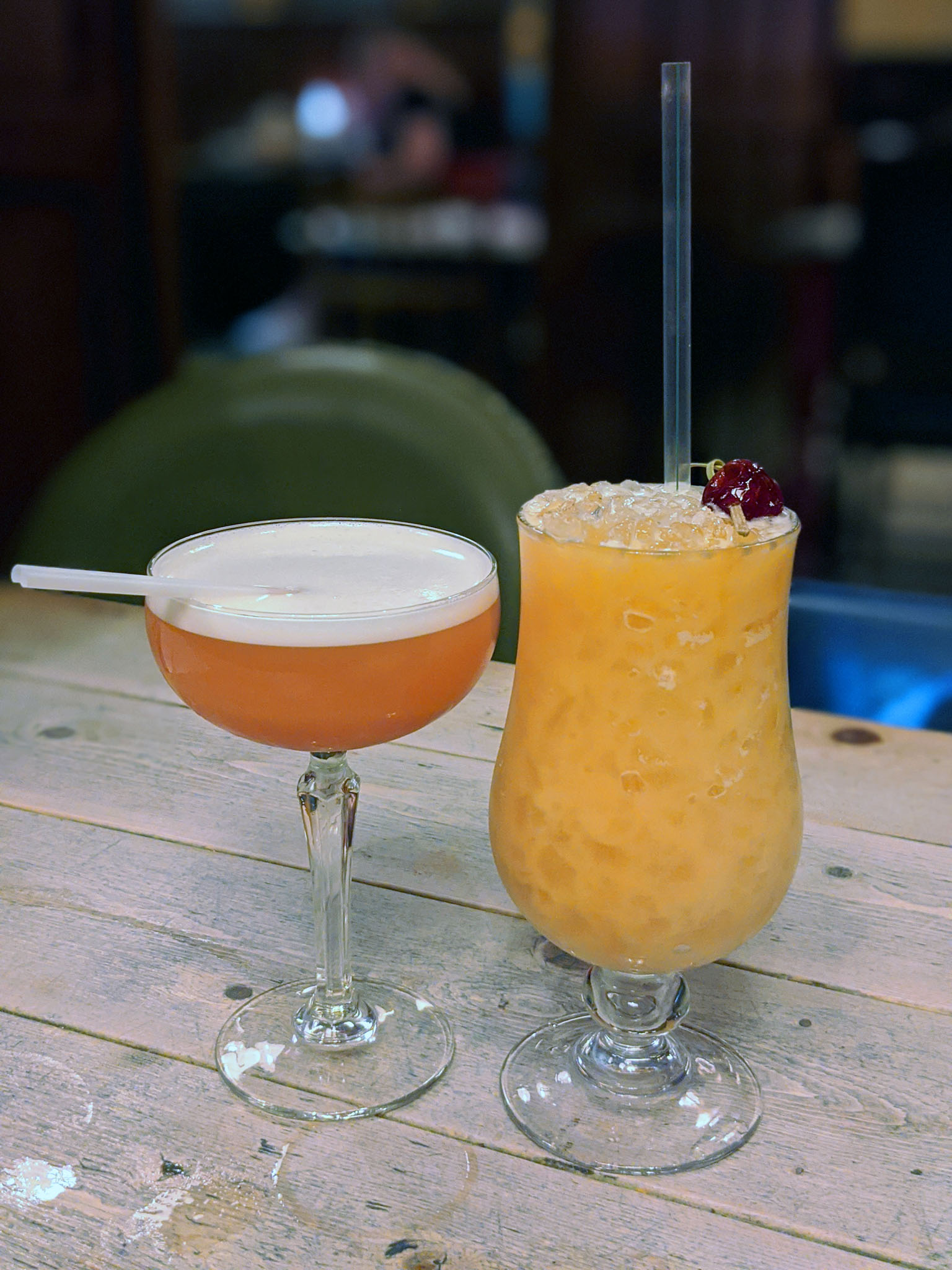Before we’d arrived in Weymouth we’d had a plan about what we might do despite the partial lockdown in effect during this West Country break. On the first day we would drive down to Portland, have a wander around, and take a tour of the lighthouse. On the second day we would see what the town itself had to offer. That was the order we intended because the lighthouse opening hours were limited to that first day. Needless to say, that didn’t work out at all; partly, this was due to us having parked the car far enough away from the hotel (see: First Evening in Weymouth) that we just didn’t fancy that stroll ahead of leaving (yeah, we’re that lazy) but mostly it was because the September weather had not been behaving in Dorset and the thought of being out on an exposed walking route with a chilly wind and occasional downpours didn’t fill us with a lot of joy. The nature of travelling during a pandemic is that you need to be flexible and so we gave Weymouth two full days to entertain and interest us instead. Here’s what we got up to on day one.
Despite not wanting to be out on Portland in inclement weather conditions we don’t generally have a problem with a little rain so we decided we’d give our legs some exercise and take in a little of the South West Coast Path, England’s longest national trail which just so happens to run through the town in which we were staying. South of our hotel and the town harbour it runs around the Nothe Peninsula and alongside Newton’s Cove and Portland Harbour. We spotted a castle marked on the map and set that as our walking destination, expecting plenty of views out to sea and plenty of cruise ships to spot from afar.
From the hotel we headed across the road to the beach and out onto the Weymouth Pier area around the Pavilion, north of the harbour entrance. We’d been able to see seven ships anchored in the bay the night before but one of the P&O vessels was notable by its absence this morning.
To get to the southern side of the harbour entrance involved a short walk along the water’s edge and across the bascule bridge that lifts periodically to allow vessels to pass in and out of the River Wey. The harbour area of Weymouth was very picturesque with buildings dating from around the seventeenth century forming the general backdrop to a variety of fishing and tourist boats. Incidentally, we did look at seeing if any of the boats were taking passengers out to see the cruise ships up close and they were but they were all booked up when we arrived. Plenty of us cruise-loving weirdos around.
The first place we planned to visit was just beyond the harbour area. Weymouth Museum was located in Brewers Quay, a very attractive building and not just because it used to be a brewery. Built near the end of Queen Victoria’s reign, the building has passed through many hands, and since it stopped making beer (boo) has housed shopping areas and dining establishments and an art gallery but nowadays is mostly vacant and will likely end up as fancy housing most people can’t afford because isn’t that what all lovely buildings eventually end up as?
Weymouth Museum was closed. This was something I’d have known if I’d read my phone correctly when I’d spotted it on the map, but we would end up visiting it on the following day which you’ll be able to read about in the next post in this travelogue series.
So… This castle and fort you want to see too… They are actually open, aren’t they?
Taking my wife’s implied “If you make me walk for ages in this weather and these things are closed I will push you from the nearest cliff” to heart I double-checked that the two other places we’d been planning to visit were really open – they were – and headed for the one farthest away first with a route that took us directly to Newton’s Cove.
Newton’s Cove is the sheltered area of water between the Nothe Peninsula and Portland Harbour, the largest man-made harbour in the world when construction was completed in 1872. Our map view hadn’t given us any reason to suspect we wouldn’t be able to walk along the northernmost of the breakwaters – the Bincleaves Groyne – that form the harbour but this wasn’t the case so we had to make do with some cruise ship-spotting from the mainland. The low cloud, blustery wind, and damp conditions in the air didn’t make for the best photography experiences, sadly.
The walking trail climbed at this point towards Bincleaves Green, an open and elevated space with views that would be particularly lovely on sunnier days but were still pleasant enough on this one.
Prominent on the green was a monument to Sir Thomas Fowell Buxton, MP for Weymouth in the early nineteenth century. Fowell Buxton was a very important though lesser-known figure in abolitionism, taking over from William Wilberforce‘s lead role in that respect in Parliament and bringing to fruition the movement that had arisen to end the slave trade initially, then free the slaves. For this reason he has memorials, plaques, busts, and monuments in numerous locations around the UK, and on the five pound note featuring Elizabeth Fry, thanks to his friendship with her and his work on prison reform too, he is the leftmost man wearing glasses in the depiction of Fry reading to Newgate prisoners. I suspect that the best that the current crop of self-serving politicians in Parliament can hope for from the future will be decent likenesses among the effigies constructed and burnt during their monthly name-cursing ceremonies.
The South West Coast Path conjured up in its name a path by the coast and, while we could see that it transformed into roads for the next stretch of walking, these too, with their names Redcliff View and Belle Vue Road, led us to believe that following this national trail would be one of attractive sea vistas en route to the castle that was our destination. Well, I think you can probably guess what I’m leading up to here. It’s entirely likely that houses along the coastal side of those roads do indeed have stunning seascapes onto which their owners can gaze but for someone traipsing along the street there is but a single glimpse of water to be had in a metre-wide gap down the side of one building. We entertained ourselves along this part of the walk by coming up with new names for it, such as The South West Nothing But Houses Trail and The Brick-Lined Route Of The Imagination and, our favourite, It’s A Road.
We eventually came upon the first of the two historical Weymouth sites we planned to visit this day and initial views of the garden area in front of Sandsfoot Castle were very pleasantly surprising indeed; the explosion of colour in the flowers and the tropical feel of the palm trees on such a grey day seemed wonderfully out of place and character for the walk thus far. These gardens were originally planted in 1951 following closure of the castle to the public on safety grounds in the wake of the collapse of what had been the fortification’s gun platform.
As you can tell from the photos below, Sandsfoot Castle is not large. It is a sixteenth-century blockhouse, a single building built for defensive purposes during the reign of Henry VIII, and was in use until after the Civil War. Local people then started to remove parts of the structure for building work in the area and Sandsfoot Castle became a ruin then, thanks to the easily-eroded clay cliffs on which it was constructed, a danger to the public. The twenty-first century saw repairs made to the foundations and the addition of a raised walkway on which to view the castle in a safe manner and that is what you can see today.
We weren’t the only people braving the fine drizzle of the day to read the information boards and take a look inside a piece of history on the Dorset coast this morning, and special mention must be made of the woman in the centre of the photo below who walked in, walked straight to the viewing spot and location of an information board you can see, and proceeded to stand there and look out to sea with a coffee in her hand for close to ten minutes while the rest of us waited patiently for her to move on. Us all being sensible people who sensibly were maintaining social distancing, along with us all being British people and unfailingly reserved, nobody deigned to get close to her and shout something like “Oi! A little consideration for the rest of the visitors getting rained on out here!?” Obviously we wanted to do that but the law of the land dictates we must tut and shake our heads at one another instead and that’s precisely what we did.
As we left Sandsfoot Castle we spotted a sign for the Rodwell Trail which sounded more enticing than retracing our steps back towards town on the inappropriately-named South West Coast Path. The Rodwell Trail was very pleasant, mostly flat, and shielded from the worst of the elements by trees and bushes, and follows along the route of what was a railway line in the nineteenth century and first half of the twentieth century. Indeed, you can see remnants of the old railway line as you walk along, something that shows how quickly nature can restore the impacts of humans if allowed to do so. This trail is also purportedly home to a variety of wildlife with boards positioned along its length indicating the nearby presence of bats or butterflies or lizards; we never saw any, though.
To Nothe Fort, then. With the increasingly more important naval use of nearby Portland Harbour in the latter half of the nineteenth century it was considered necessary to build defences and Nothe Fort was the result. Despite this, it never really saw any action with the only real excitement being the firing of its rampart guns as a warning to unidentified vessels approaching during World War II that subsequently turned out to be refugees. In the 1950s Nothe Fort was effectively abandoned, sold to the council, went through a period of neglect, almost got turned into a hotel, housed civil administration nuclear shelter facilities, but eventually underwent a bit of restoration and transformation into the museum it is today.
Entering Nothe Fort puts you in the centre of a D-shaped space with the curved ramparts facing out to sea and sporting a few guns. Disabled access was very good at the fort with ramped areas and elevators. Wide-ranging views can be had and if it hadn’t been quite so exposed to freezing gusts we might have spent more time enjoying them. Of course we gazed out at the cruise ships again but we are a smidge obsessed in that respect. Not as bad as some people I could mention, mind.
The main space of the ground level of the fort felt underused to us with just a few items of interest such as an air raid shelter. Beneath the ramparts there were some rooms with displays but at this point exploring the fort we felt it was okay but nothing special.
However, there is a lower level to the fort running under the walls of it with rooms to either side and this was far more interesting. It was also far less cold and that was a real bonus on this visit. Models, maps, photos, and information posters filled many of the rooms and it would be easy to spend hours exploring this part of Nothe Fort if military history and the history of Weymouth were things that fascinated you. I personally loved the Cold War civil defence room reconstructions because the sight of a BBC computer and 5.25 inch floppy disks makes my nerd neurons fire.
Nothe Fort is certainly worth a visit if you’re passing through or staying in Weymouth but, of course, the really important question is: How do you pronounce Nothe?
Here we are then at… Nothee?.. Fort.
Is that the pronunciation you’re going with?
What do you think? Not He?
That doesn’t make any sense. “This fort: what’s his name?” “Ooh, fort not a man. Not he.”
It’s like the word “another” with missing start and end letters. ‘Nuther. “What’s this fort’s name? Don’t ask me, mate. It’s just ‘nuther fort as far I’m concerned.”
Knowth. As in “Oh yes, I knowth this fort very well. Difficult to pronounce, it is.”
Anyway, you’ll be pleased to know that one of those pronunciations is in fact correct.
Sandsfoot Castle, Nothe Fort, Rodwell Trail, and a short trek along the least interesting part of the South West Coast Path (I hope) satisfied our urge to explore some of Weymouth so the remainder of the day would be more relaxed. And yes, that is a euphemism for “mostly spent in the pub”. We started off by heading back towards the picturesque harbour area in order to cross back over the bridge to the main part of town.
First of the Weymouth pubs was the Rendezvous & Royal Oak on the harbour’s edge and with a lovely view of the bascule bridge that we got to see raise and lower while we had a drink. Drinks were ordered via an app and social distancing was observed well. Incidentally, the drinks you see below aren’t ours. They were delivered to our table, we thanked the member of staff, we poured the cider out, I took the photo, and then we realised we hadn’t ordered them. A small mix-up as a nearby table had ordered similar drinks to us. Seemed like a pretty nice pub and the staff were very friendly but we only stayed for one.
The two other pubs we discovered were so good – and very different from one another – that we would hit both of them on the following day in Weymouth too. First up, and only because my wife spotted a sandwich board in the high street indicating it was one street over, was the Doghouse Micropub. We adore micropubs and this one was lovely; one long room with seating at one end and a bar the other, plus the all-important wide range of craft ales and ciders to taste-test. As the name suggests and as one of the photos below confirms this is also a dog-friendly pub, and we saw several people turn up for drinks with their four-legged friends in attendance. We were also very impressed with the toiletries in the pub loo which included deodorant and feminine hygiene products to use freely. Definitely hit this place up if you like craft ales, dogs, or craft ales and dogs.
Because we fancied something a little more substantial than pub snacks to eat we then went in search of somewhere that would do some food along with more drinks. We knew that this wouldn’t be easy with a lot of places requiring advance bookings because of The Times In Which We Live (in fact, we made sure to book a table for a meal for the following night because of this) but we took a chance on the Nautico Lounge when we saw its website saying people could just turn up and be seated. This turned out to be a great discovery. A QR code on the table allowed for easy access to a website to order food and drink (no app download required) and panels were positioned between the well-spaced-out tables to enforce distancing. The pub itself was very attractive with a great range of food and drink on offer. We do like a cocktail (it’s a side-effect of all those cruises coupled with borderline alcoholism) and we were very happy with the available choices.
In the next post in this West Country travelogue series I’ll cover our final day in Weymouth which will see a return to some pubs, an evening meal in a restaurant on the beach, and, ahead of all that, visits to the town museum, the aquarium, plus a look at a whole lot of sand sculptures.














































































